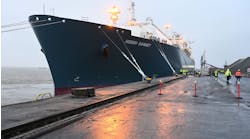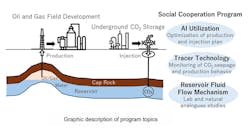Tighter controls set for UK offshore helicopter flights
Offshore staff
LONDON --The UK Civil Aviation Authority (CAA) has introduced new measures designed to increase the safety of offshore helicopter flights.
They follow asweeping review of offshore helicopter operations performed with the Norwegian CAA and the European Aviation Safety Agency (EASA), and advised by independent specialists.
The measures include:
• Prohibiting helicopter flights in the most severe sea conditions, to limit the risk of a ditched helicopter capsizing and the associated rescue operation
• Passengers will only be allowed to fly if they are seated next to an emergency window exit to make it easier to leave the aircraft in an emergency (unless helicopters are fitted with extra flotation devices or the passengers are provided with improved emergency breathing systems)
• All passengers to have better emergency breathing equipment to increase underwater survival time, unless the helicopter is equipped with side floats.
Additionally, the CAA plans changes to the way pilots are trained and checked, and it will take on the role of approving each offshore helideck, ensuring compliance with safety standards.
Other recommendations made to EASA, the regulator for helicopter certification and airworthiness, include:enhancing the safety of helicopters; establishing a review of offshore helicopter accidents and incidents with national aviation organizations, to highlight safety issues and develop solutions; and standardized helicopter operating information for pilots.
CAA also expects helicopter operators to make the following improvements:
• Fitting side floats
• Implementing automatic flotation equipment
• Adding hand holds next to push out windows
• Alterations to life rafts and lifejackets.
The agency also expects the UK’s Offshore Petroleum Industry Training Organisation (OPITO) to improve survival training for offshore workers.
CAA Chair Dame Deirdre Hutton said: “We will monitor and report regularly on progress, so that people can have confidence that these important changes are being implemented as quickly as possible.”
The review team compiled evidence from trade unions representing industry personnel and pilots, the oil and gas industry, helicopter operators, manufacturers, government, regulatory bodies and others.
The CAA will establish and chair a new safety forum to promote delivery of the recommendations and to report publicly on progress.
Oil & Gas UK health, safety & employment issues director Robert Paterson said:
“The focus is now on managing the changes arising from the report in a considered and systematic way…”
“We have a constructive working relationship with the CAA and we will continue to work closely with the CAA and the Helicopter Safety Steering Group (HSSG) to ensure the recommendations made in today’s report are acted on as appropriate.”
2/21/2014


